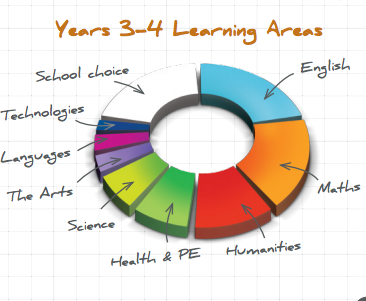Mid-Year Reports will go home at the end of this week after teachers have spent many hours moderating evidence of student learning, assigning grades and writing comments to communicate with families about how students are progressing in their learning.
DECD have introduced new expectations in regard to report writing this year and you will notice some differences in reports this term. At Woodend we are in the process of developing a report that will meet DECD expectations and ensure an efficient and effective process and format.
This term you may notice that some classes have a slightly different format from others and this is all part of the process of us enacting the changes that DECD require. There is a good chance the end of year report format may look different again in some classes as we accomodate ongoing fine tuning to ensure the report is a useful document for all.
The following information is from the DECD parent information pamphlet that is available online.
What are the requirements for student reports?
Written reports are just one way that schools communicate with you about how your child is progressing at school.
All schools in South Australia provide parents and carers with 2 written reports each year that:
- report on all subjects studied by their child
- are based on a 5-point achievement scale
- use plain language
- identify areas of strength and areas that need more development.
Years 1 to 7 student reports are based on an A to E achievement scale, supported by a description of what this means in relation to their progress against the achievement standard.
Reports for Reception students use descriptive wording about students’ progress over the year referenced to the Reception level achievement standard.
How do teachers allocate grades?
Teachers use a range of different assessment strategies and tools to gather evidence of student achievement with reference to the achievement standards in the Australian Curriculum. Based on the evidence, teachers make an on-balance judgment to decide which grade best matches the standard the student has achieved. Teachers are not expected to allocate a set number of each grade within their class.
What other forms of reporting do schools provide?
At Woodend we communicate with you about your child’s learning in a variety of ways including parent-teacher interviews, formal and informal conversations and the class digital communication spaces. You can request to meet with a classroom teacher any time throughout the year by contacting the school to make a mutually convenient time.
What do A to E grades mean?
A to E grades or word equivalents are used by teachers to report students’ achievement against the Australian Curriculum achievement standards. The grades describe a range of achievement from minimal to excellent.
- An ‘A’ grade indicates that the student has shown a thorough knowledge and understanding of a topic and can apply that information in unfamiliar situations.
- Typically a ‘C’ grade means a student is achieving what is expected of them at that point in their learning. This is a considerable achievement because of the high expectations built in to the achievement standards. This is also where we would expect students to be at if they are working and achieving appropriately.
- An ‘E’ grade means the student is just beginning to work towards the achievement standard.
A to E grades and the accompanying comments are one aspect of reporting to parents/carers/guardians. Student reports also provide information about:
- a student’s strengths and areas for development
- strategies to assist their progress
- attitude and commitment to learning
- social development
- involvement in school programs and activities
- attendance
If you are interested to know more, please find parent information sheets on:
Australian Curriculum Parent information Guides – these information sheets give an overview of what your child will typically learn in each of the eight learning areas.


Leave a Reply